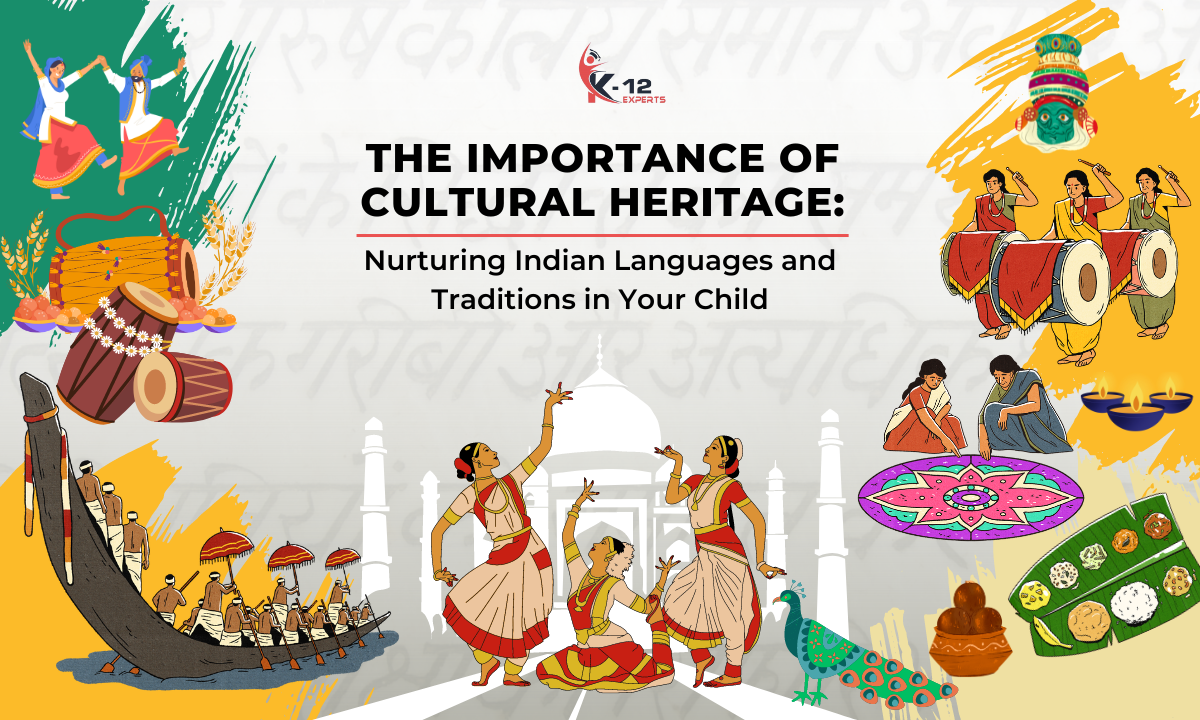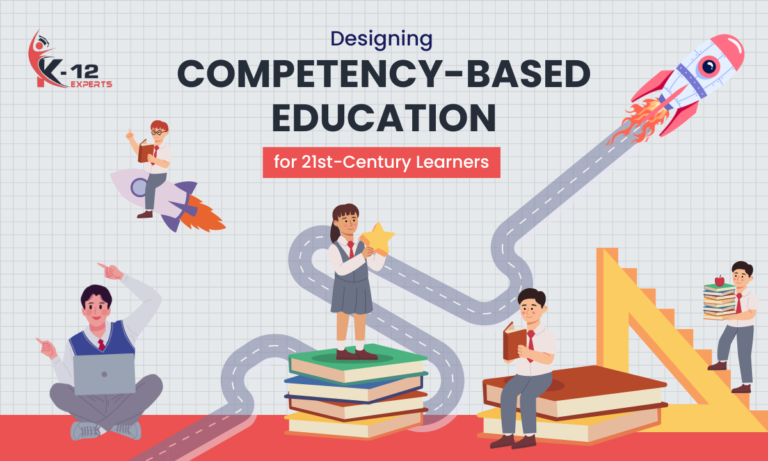Over the past 50 years, nearly 220 Indian languages have disappeared. As a parent, you have a crucial role in preserving our cultural heritage by teaching your child Indian languages and traditions. By encouraging them to speak their native language and celebrate traditional festivals, you help them develop a strong cultural identity.
But how can you balance this with modern influences? Let’s explore practical ways to integrate these essential elements into your child’s daily life.
First, make language learning fun. You can engage it with storytelling, songs, or even apps designed for language learning. For instance, apps like Duolingo offer courses in many Indian languages.
Second, celebrate traditional festivals at home. Explain the significance of each festival, and involve your child in the preparations. This helps them understand and appreciate their heritage. For example, you can teach them how to make traditional sweets or decorations during Diwali.
Third, connect with your community. Join local cultural groups or attend events that celebrate Indian traditions. This provides a sense of belonging and reinforces the importance of cultural practices.
By integrating these practices, you can help your child embrace their heritage while navigating modern life.
The Importance of Cultural Heritage
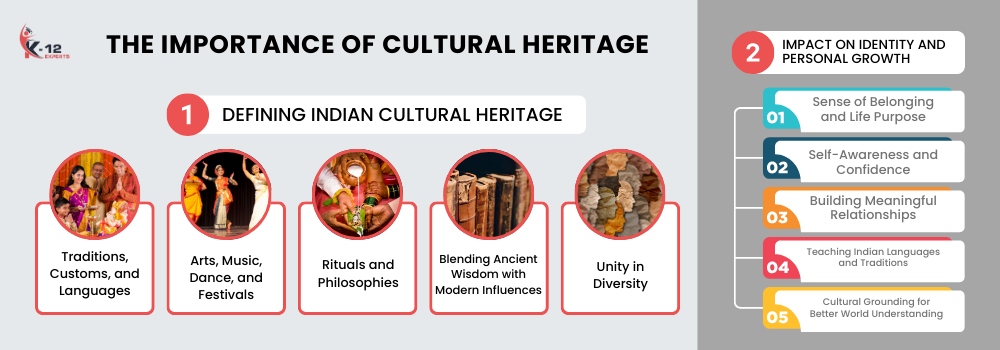
Indian cultural heritage is full of languages, traditions, and values that influence who we’re as individuals and as a community. It connects us to our history and helps us grow by linking us to our roots.
Defining Indian cultural heritage
Why is Indian cultural heritage vital to the nation’s identity and collective memory?
Indian cultural heritage includes traditions, customs, languages, arts, music, dance, festivals, rituals, and philosophies that have developed over thousands of years.
It highlights the diverse cultural practices of various regions, religions, and communities, blending ancient wisdom with modern influences.
Think of the vibrant colors, intricate designs, melodic music, and flavorful cuisine that define India.
These traditions are passed down through generations, representing the nation’s history, philosophy, spirituality, and creativity.
Embracing this cultural heritage helps preserve a legacy and celebrates the unity in diversity that makes India unique.
Impact on identity and personal growth
Embracing Indian cultural heritage can profoundly shape your identity and personal growth by connecting you to a wide range of traditions and values. This connection helps you feel a strong sense of belonging and gives your life purpose. Understanding your cultural identity also enables you to become more self-aware and confident, making it easier to face challenges.
When you appreciate your unique background and value diversity, you can build meaningful relationships in our global society. Teaching your child Indian languages and traditions isn’t just about preserving culture; it’s about creating a solid foundation for their growth. This cultural grounding helps them understand the world better and feel proud of who they are.
Preserving Indian Languages
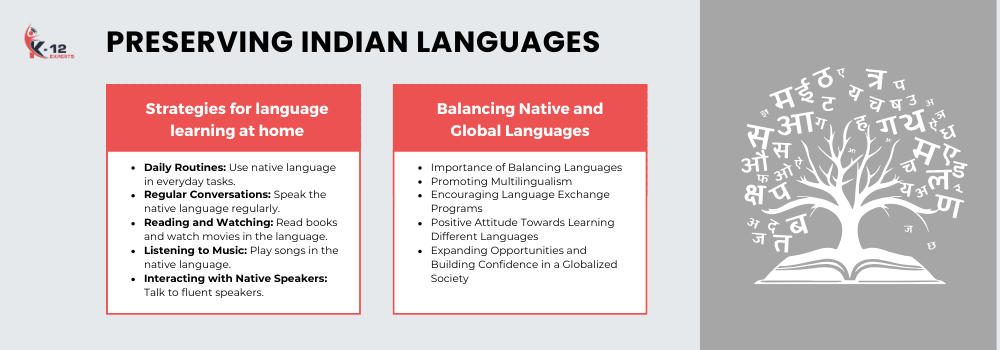
When you aim to preserve Indian languages, consider methods for learning at home, like having daily conversations and reading local books.
It’s crucial to balance native and global languages to stay connected to your culture while engaging in global communication.
Strategies for language learning at home
Creating a language-rich environment at home is important for parents who want to keep Indian languages alive in their children. Here are some effective ways to do this:
- Daily Routines: Use the native language in everyday tasks. For example, tell stories, sing traditional songs, and play language games. This makes learning a natural part of life.
- Regular Conversations: Speak the native language regularly. This helps children get used to it and improves their skills.
- Reading and Watching: Read books and watch movies in the language. This makes learning fun and engaging.
- Listening to Music: Play songs in the native language. This can improve listening skills and make the language more enjoyable.
- Interacting with Native Speakers: Talk to people who speak the language fluently. This boosts confidence and fluency.
- Cultural Events and Classes: Join language programs, cultural events, and heritage classes. These activities help children better understand their culture.
These strategies not only help preserve the language but also teach children about their cultural heritage, making them proud of their roots.
Balancing native and global languages
Balancing native Indian languages with global languages is crucial for children. It helps them keep their cultural roots while gaining important skills for today’s interconnected world. Promoting multilingualism makes kids more adaptable and better at understanding different cultures.
Encourage activities like language exchange programs to help them practice. A positive attitude towards learning different languages teaches respect for other cultures.
Knowing both Indian and global languages allows them to communicate well in various settings, expanding their opportunities and making them more confident in a globalized society.
Passing Down Indian Traditions
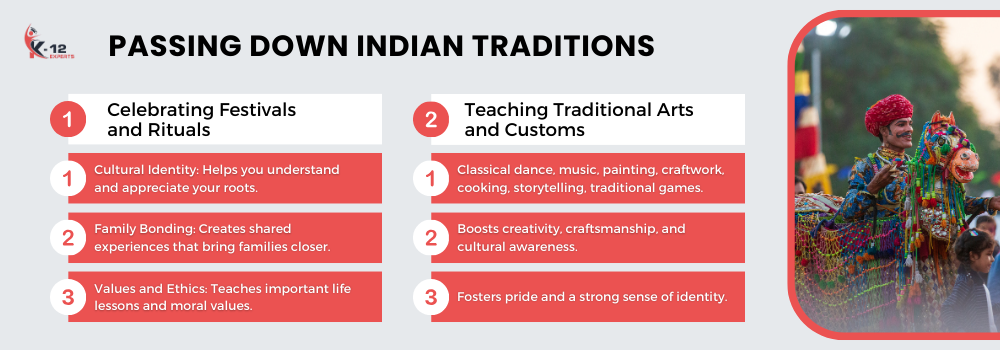
You play a key role in keeping Indian traditions alive by celebrating festivals and performing rituals. These activities help younger generations connect to their heritage.
Teaching traditional arts and customs not only keeps these practices going but also builds a sense of pride and identity.
Celebrating festivals and rituals
Participating in India’s festivals and rituals helps preserve cultural heritage, teaches children traditions, and builds community spirit. Rituals like puja and prayers strengthen cultural identity and pass down wisdom, creating lasting memories and a strong sense of belonging.
Here are some key benefits:
- Cultural Identity: Helps you understand and appreciate your roots.
- Family Bonding: Creates shared experiences that bring families closer.
- Values and Ethics: Teaches important life lessons and moral values.
For example, lighting lamps during Diwali not only brighten homes but also symbolize the victory of light over darkness, which is a valuable lesson.
Similarly, playing with colors during Holi brings joy and promotes unity. Engaging in these rituals and festivals helps you build a strong, supportive community.
Teaching traditional arts and customs
Celebrating festivals and rituals helps build community spirit. However, teaching traditional arts and customs is a more personal way to pass down Indian heritage within families. Get your children involved in activities like classical dance, music, painting, craftwork, cooking, storytelling, and traditional games.
These activities not only keep cultural traditions alive but also boost creativity and craftsmanship. They help children express themselves and understand their cultural roots better. Engaging in these arts nurtures your child’s talents and creativity while building cultural awareness.
Hands-on learning gives children a deep appreciation for Indian art forms, fostering pride and a strong sense of identity. This approach ensures that India’s artistic traditions continue to thrive, enriching your family’s cultural heritage.
Benefits of Cultural Education
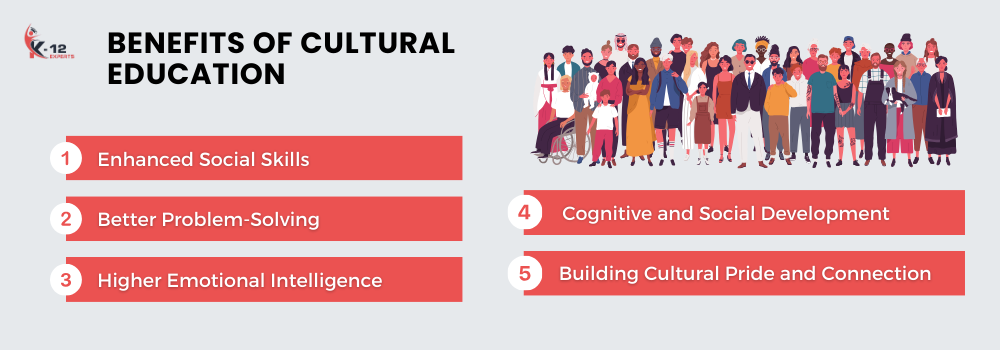
Engaging in cultural education helps improve your thinking and social skills.
It also makes you feel proud of your heritage and more connected to it.
By learning about different cultures, you can better understand and appreciate your own.
This knowledge helps you build a stronger sense of identity and promotes a more inclusive and caring society.
Cognitive and social development
Cultural education plays a key role in boosting cognitive development and social skills. It helps people develop creativity and emotional intelligence and better understand different viewpoints.
Activities like music, dance, art, and storytelling can greatly improve your child’s cognitive skills and creativity. Here’s why:
- Better Problem-Solving: Cultural activities teach kids to think critically and come up with creative solutions.
- Higher Emotional Intelligence: Learning about different emotions and ways to express them builds empathy and self-awareness.
- Enhanced Social Skills: Working together in cultural activities improves teamwork, communication, and respect for others.
These benefits are vital for raising well-rounded individuals who can thrive in diverse settings and build strong relationships. Embrace cultural education to help unlock your child’s full potential.
Building cultural pride and connection
Learning about your culture helps you feel proud and connected to your heritage. This knowledge boosts your self-esteem and strengthens your identity.
When you understand your cultural roots, traditions, and histories, you feel a sense of belonging and respect for where you come from. This process not only makes you feel better about yourself but also helps bond different generations and strengthen family ties.
Cultural education also promotes community unity and shared values. Knowing more about your culture helps you appreciate its unique aspects and encourages you to pass these traditions down to future generations.
Practical Tips for Parents
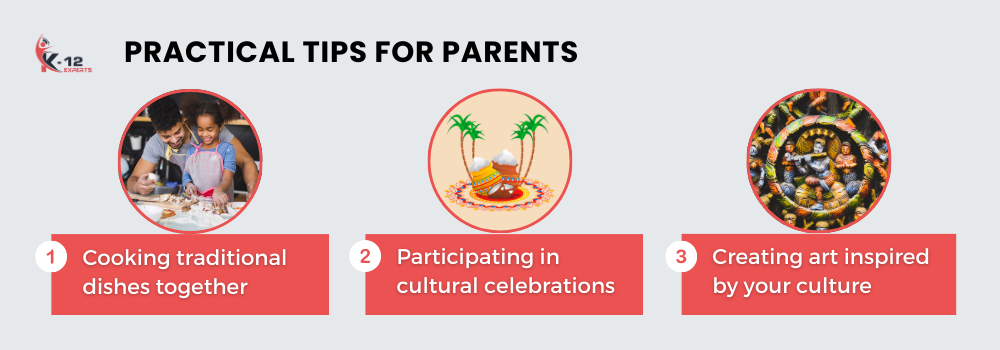
To create a culturally rich environment at home, start by adding traditional practices to your daily routines and celebrating cultural festivals with excitement.
Teaching children about their culture takes consistent effort and creativity. For example, you can use fun methods to teach native languages and involve your kids in community events. Your active participation helps build a strong cultural identity for your children.
Creating a culturally rich environment
Creating a culturally rich environment at home helps your children connect deeply with their roots. Start by integrating elements of your heritage into daily life. Display cultural artifacts, artwork, and decorations to make your home a visual celebration of your heritage. Include traditional music, dance, and storytelling in family activities for immersive cultural experiences.
Engage your children by:
- Cooking traditional dishes together: Share recipes and stories while preparing meals that reflect your culture. For example, if your heritage is Italian, make homemade pasta together.
- Participating in cultural celebrations: Celebrate holidays and rituals to offer hands-on learning. For instance, if you celebrate Diwali, involve your kids in decorating and preparing traditional sweets.
- Creating art inspired by your culture: Encourage kids to make crafts or paintings representing their heritage, like making Mexican papel picado or Japanese origami.
These activities help instill pride and respect for cultural diversity in your children.
Overcoming challenges in cultural preservation
Balancing modern life with cultural preservation requires parents to be dedicated and creative in keeping their heritage alive for their children. It’s important to set aside specific times for cultural celebrations and learning activities. Encourage open communication and respect to address intergenerational differences.
| Challenge | Practical Tip |
| Time constraints | Schedule regular cultural activities |
| Intergenerational conflicts | Foster open, respectful discussions |
| Lack of community resources | Seek out cultural groups and networks |
| Limited access to knowledge | Utilize educational opportunities and resources |
Work together as a family to involve everyone in cultural preservation efforts. Understanding the value of your heritage and actively promoting cultural diversity ensures that your traditions stay vibrant for future generations.
Frequently Asked Questions
What Are Some Popular Indian Folktales for Children?
You should explore the ‘Panchatantra’ and ‘Jataka Tales.’ These collections are full of wisdom and moral lessons. Stories like ‘The Lion and the Mouse’ and ‘The Monkey and the Crocodile’ are perfect for sparking children’s imaginations.
How Can We Celebrate Indian Festivals in a Multicultural Environment?
To celebrate Indian festivals in a multicultural environment, you can share the unique stories behind each festival. Decorate with vibrant colors and serve traditional Indian foods. Encourage everyone to join in, which helps build unity and appreciation for different cultures.
How Do Indian Classical Dance Forms Contribute to Cultural Heritage?
Indian classical dance forms preserve ancient traditions by combining storytelling, music, and spirituality. These dances help people connect with their cultural roots and better understand their heritage. Watching or practicing these dances promotes a sense of identity and allows for creative expression.
What Are Some Traditional Indian Games That Can Be Introduced to Children?
Introduce your kids to traditional Indian games like Kabaddi, Kho-Kho, and Gilli-Danda. These games are fun and help them learn about India’s culture. Playing these games can make them appreciate their heritage while enjoying themselves.
How Can Storytelling Be Used to Teach Indian History and Legends?
Storytelling can make learning Indian history and legends fun for children. By sharing stories of brave heroes, important moral lessons, and cultural traditions, you can help kids feel connected to their heritage. This way, history feels alive and meaningful to them.
Conclusion
When you encourage your child to learn Indian languages and traditions, you do more than preserve cultural heritage. You give them a strong sense of identity and belonging.
This cultural education boosts creativity, teaches important values, and makes them proud of their roots. Embrace this journey with your child.
It’s not just about looking back at the past; it’s also about giving them a richer future.

